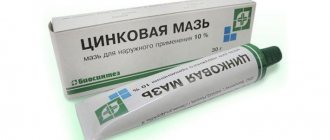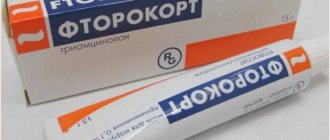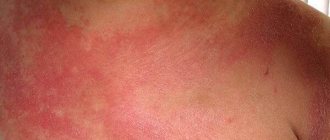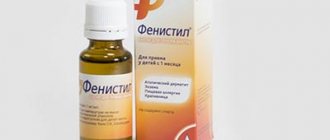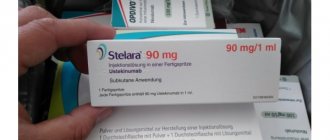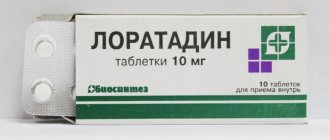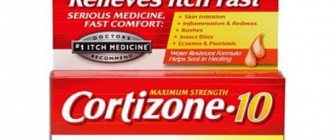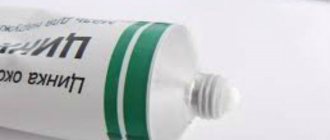List of hormonal ointments for allergies, dermatitis, psoriasis. Hormonal ointments have acquired the status of an indispensable drug used in the treatment of allergic reactions on the skin.
They help effectively eliminate symptoms such as itching, swelling, and inflammation.
- The essence of the action of the drug
- Types of funds in the category under consideration
- Combination drugs
- Hormonal ointments for children
- Hormonal ointments for facial skin
- Why are hormonal ointments dangerous?
Characteristics
The drug contains one active ingredient called mometasone (in the form of furoate). This is a synthetic glucocorticoid belonging to the group of hormones of the adrenal cortex. Elokom is available in several dosage forms:
- Cream.
- Ointment.
- Lotion.
Each of them contains its own set of excipients. For example, the cream, in addition to mometasone, also contains phosphatidylcholine, hexylene glycol, paraffin, wax, starch octenyl succinate. Soft dosage forms are placed in 15 gram tubes, and the lotion is available in bottles with a dropper (volume 20 or 30 ml).
Types of funds in the category under consideration
Hormonal preparations for allergies or dermatitis, as mentioned above, are divided into four groups based on the intensity of their effects.
Drugs characterized by combined effects are also included in a separate category.
Hormonal ointments of the first group
This group is represented by the weakest agents, which slowly penetrate the surface layer of the skin and provide a short-term effect.
Such ointments are presented:
- Dipersolone;
- Hydrocortisone.
The active substance in this group of drugs is a synthetic analogue of hormones produced by the adrenal glands.
Hormonal ointments of the second group
The list of hormonal drugs that are characterized by moderate effects includes the following:
- Hydrocortisone butyrate (laticort);
- Lorinden;
- Afloderm;
- Cinacort;
- Prednisolone;
- Prednicarbate;
- Deoxymethasone;
- Locacorten.
Hormonal ointments of the third group
This group is characterized by a fast-acting effect, which is ensured by the use of creams in the form of:
- Beloderma;
- Celestoderma;
- Celederma;
- Advantana;
- Kutiveita;
- Polcortolone;
- Mometasone furoate;
- Sinalara;
- Apuleina;
- Flucorta;
- Fluorcinoid;
- Betamethazonovalerate.
Quite often, patients are concerned about the relationship of Sinaflan or, for example, Elokom to the group of hormonal drugs.
These two drugs are quite popular, and directly represent the list of drugs of the third group - the effect of which is fast-acting.
Hormonal ointments of the fourth group
Ointments differ in their deep penetration into the skin by type:
- Galcinonide;
- Chalciderma;
- Dermovate;
- Diflucortolonavalerate.
This group of drugs is potent, and taking them independently, without consulting a doctor, can provoke the development of a number of side effects.
Action
Mometasone is a potent glucocorticoid. And to the question of whether Elokom is hormonal or not, the answer will certainly be in the affirmative. The main effects of the drug are as follows:
- Anti-inflammatory.
- Antiallergic.
- Vasoconstrictor.
- Antiexudative.
- Antipruritic.
The mechanism of the therapeutic effectiveness of the drug is based on the suppression of the production of lipocortins - biologically active substances that regulate the synthesis of inflammatory mediators (prostaglandins and leukotrienes). Mometasone is able to block the action of histamine and serotonin and reduce the sensitivity of nerve endings to them. In addition, the drug has membrane-stabilizing properties, reduces vascular permeability and narrows their lumen, and inhibits the production of cytokines.
Elokom is a hormonal drug with pronounced anti-inflammatory properties and other therapeutic effects.
Contraindications
Hormonal ointments are ointments containing glucocorticoids. Glucocorticoids, in turn, are hormones produced by the adrenal glands. They greatly affect the metabolism of proteins and carbohydrates in the body. Thanks to these hormones, skin diseases can be cured very quickly. Hormonal allergy ointments have both undeniable advantages and known disadvantages.
List of the most famous ointments:
- Elokom
- Advantan
- Cutivate
- Lokoid
- Afloderm
- Sinalar
- Apulein
- Dermovate
These ointments are prescribed when the body cannot cope with the production of sufficient amounts of hormones (mainly cortisone) and cannot suppress inflammation in the body.
These drugs are also prescribed when other drugs are powerless. Their advantage is that they quickly bring relief, neutralize the inflamed area, and remove the source of inflammation.
- Viral skin lesions (shingles, herpes).
- Allergic reactions after vaccinations.
- Bacterial skin diseases.
- Mycoses (fungal skin diseases).
- Venereal diseases.
- Perioral dermatitis.
- Tuberculosis.
- Scabies.
- Acne.
- Use with caution in children under seven years of age.
- Pregnancy is a relative contraindication.
Hormone-based products should not be used by young children with the following conditions:
- sensitivity to the applied ointment revealed by a skin test;
- chicken pox;
- "diaper" dermatitis.
Before using a hormonal drug, it is recommended to do a skin test. To do this, apply a small amount of cream near your palm and leave it for 15 minutes. If during this time no negative reactions appear, then the medicine can be safely used.
Distribution in the body
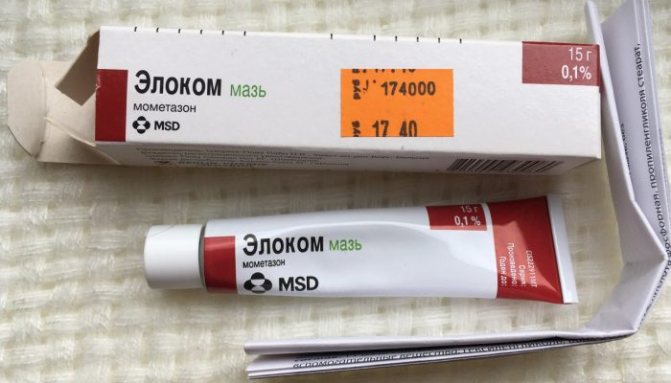
When applied to the skin, the extent of systemic absorption of mometasone is determined by several factors. Firstly, the drug is more actively absorbed from the damaged and inflamed surface. Secondly, the larger the application area, the stronger the absorption. Thirdly, the components of the ointment form can act like an occlusive dressing. Typically, plasma concentrations do not exceed 1% of the amount of substance applied to the skin.
Symptoms and brief description
Symptoms of dermatitis are a phenomenon that a person may not immediately notice. They can occur all at once, or several of them:
- itching;
- hyperemia;
- rash;
- peeling;
- inflammation with discharge (in acute form).
Types of dermatitis:
- photodermatitis is when rashes appear after exposure to sunlight on the skin;
- atopic dermatosis caused by a food allergen or from the external environment;
- contact type is formed by direct contact with an irritant, friction against tissue;
- Seborrheic causes excessive sebum production and the proliferation of skin fungi.
Indications
Hormonal ointment and its analogues are used in situations where corticosteroids cannot be avoided. This applies to the following diseases in dermatology:
- Psoriasis.
- Lichen planus.
- Atopic dermatitis.
Elokom cream will help not only with inflammation, but will also be a good remedy for allergies with their skin manifestations. The drug can also be used in patients with radiation dermatitis caused by exposure to ionizing radiation.
Combination drugs
If, along with irritation and inflammation of the skin, there are symptoms such as itching and infection, they resort to the use of combined ointments, which, along with hormones, include substances with antimicrobial or antifungal action.
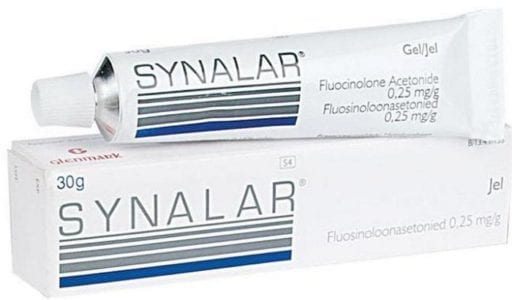
The most popular among these drugs are:
- Diprosalica;
- Vipsogala;
- Aurobina;
- Sinalara;
- Lorinden;
- Oxycort;
- Triderma.
Application
How Elokom ointment is used and what helps in a particular case, you should ask your doctor. Only a specialist is able to diagnose, identify the disease and prescribe adequate treatment. The therapeutic regimen and dosage of medications are established on an individual basis.
The cream or ointment is applied to the affected areas in an even, thin layer. The lotion is rubbed into the skin, including the scalp, until completely absorbed. The drug is used 1 time per day. The duration of therapy is determined by the severity of the dermatosis.
Hormonal ointments for children
In children, diathesis is mainly treated with hormonal drugs. After just a few uses, redness and itching disappear and a noticeable improvement occurs.
However, children should take hormonal ointments very carefully, since these drugs are considered quite dangerous for them:
- the use of hormones can cause hypertension;
- hormones negatively affect the functioning of the adrenal glands;
- The hormonal agents contained in creams penetrate the bloodstream, spread throughout the body and can cause side effects.
Doctors prescribe moderate or weak hormonal ointments for children. These include:
- Ftoderm;
- Cinacord;
- Afloderm;
- Lokoid.
Sprays and lotions penetrate the skin least deeply. They cause fewer side effects and are preferable for children.
Side effects
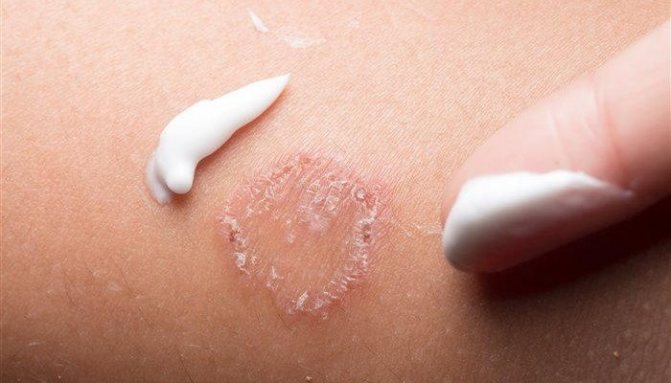
When using the drug Elokom or its analogues, side effects may be observed, which are usually only local in nature. The following reactions are likely to occur at the application site:
- Itching, burning, rash.
- Dry skin.
- Epithelial atrophy.
- Folliculitis and boils.
- Increased hair growth (hypertrichosis).
- Hypopigmentation.
- Telangiectasia.
- Striae.
Long-term use of a hormonal drug in childhood can cause more serious changes - adrenal insufficiency (albeit reversible). A similar effect is also observed when the drug is applied to large areas of the body or under an occlusive (sealed) bandage.
Any reactions other than therapeutic ones should be the basis for reviewing treatment and discontinuing the medication. However, sudden cessation of use of the drug will lead to a return of symptoms of dermatosis. Therefore, the withdrawal of Elokom is carried out gradually - slowly reducing the dose.
Negative consequences can be avoided by strictly following the doctor’s instructions regarding the method of using the drug.
Hormonal face creams
Inflammatory processes of the skin on the face and neck are often treated with the help of hormones. They cope with the existing problem quickly, however, their use can negatively affect the condition of the skin:
- acne may appear;
- the skin may become very sensitive and thin as hormones reduce collagen production;
- the appearance of atrophy and stretch marks;
- possible skin discoloration;
- pigmentation disorder.
If the use of these medications is necessary, then it is better to use lotion or cream instead of ointment. Suitable for the skin of the eyelids and face:
- Afladerm;
- Advantan;
- Elokom.
Analogs
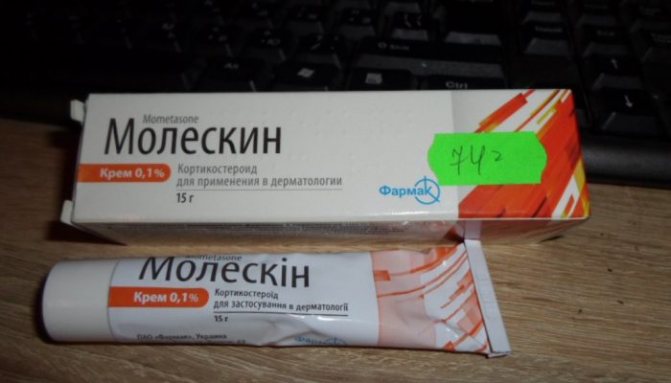
Whether Elocom has any analogue or not - this question becomes relevant in the absence of the drug in the pharmacy or the development of intolerance to a certain component. Among the analogues there are complete and indirect ones. The first contain the same active compound (mometasone):
- Molexin.
- Momekon.
- Momezin.
- Eloderm.
- Elozon.
These drugs are also available in the form of ointment or cream. Sometimes you have to make a choice in favor of other topical corticosteroids:
- Fluticasone (Cutivate, Fluderm).
- Fluocinolone (Sinaflan, Flucinar, Alergoderm).
- Betamethasone (Beloderm, Soderm, Celestoderm-B).
- Methylprednisolone (Advantan, Sterocort).
Any substitutes must be prescribed by a doctor, because despite the great similarity in therapeutic effectiveness, each active substance has certain characteristics.
Non-hormonal ointments for dermatitis
The results from the use of non-hormonal ointments and creams are not as fast as steroid ointments can provide. The effect is achieved with prolonged use. The advantages include extremely rare side effects and lack of addiction.
The list of non-hormonal medications is more extensive. The most common drugs are:
Eplan. Available in the form of a cream. Indications for use: the appearance of eczema, atopic dermatitis and reactions to insect bites.
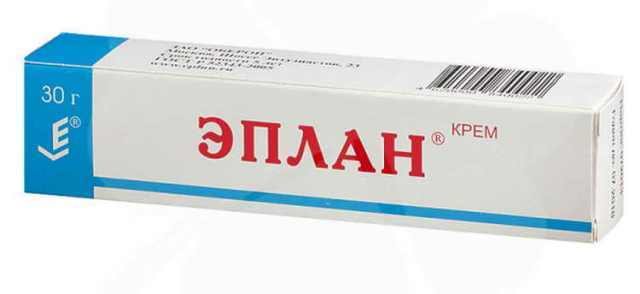
Bepanten. A common remedy for the treatment of diaper dermatitis in infants. It is also used for various types of dermatitis in children and adults, for dry and cracked skin, and as a healing agent.
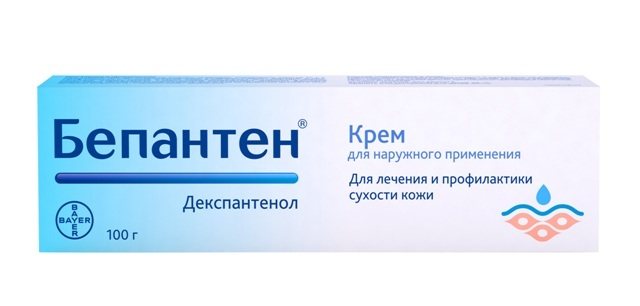
Ichthyol and zinc ointments. They have an anti-inflammatory component that relieves irritation and itching. Finistil has a similar effect.
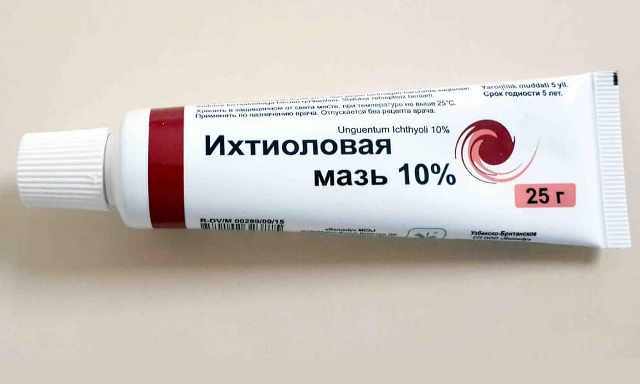
Furacilin and dermatol ointments, as well as Levosin. They disinfect damaged skin areas.

We also see Keratolan. Eliminate pathological dryness of the skin, promoting its speedy healing.
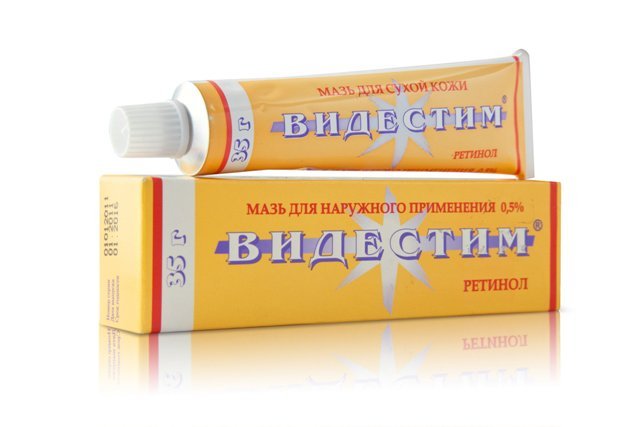
Skin Cap. Release forms: cream and gel, also shampoo and aerosol. One of the safest remedies used in the treatment of children and adults.
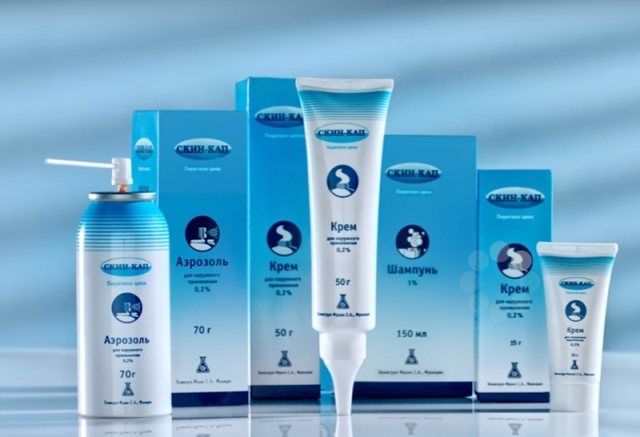
Exoderil. Prescribed for fungal skin infections, pityriasis versicolor, and any inflammatory lesions of unknown etiology.
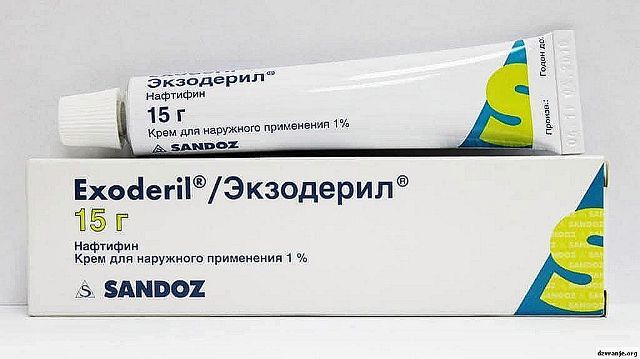
Radevit. Approved for the treatment of skin lesions in children. Used on the face and hands for pathological dryness. For facial skin it has a moisturizing and toning effect.
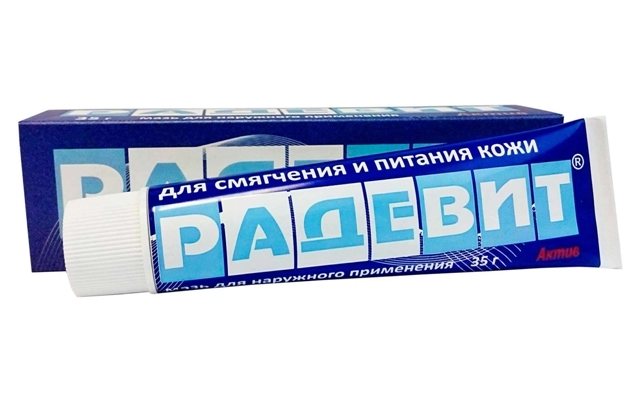
Gistan. Quickly relieves itching sensations, including allergies to insect bites.
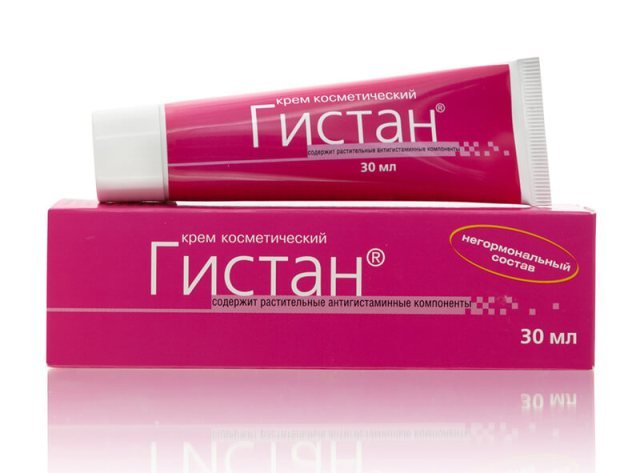
Solcoseryl. It is used to treat the effects of burns, ulcers, cracks and cuts on the skin, as well as atopic dermatitis.
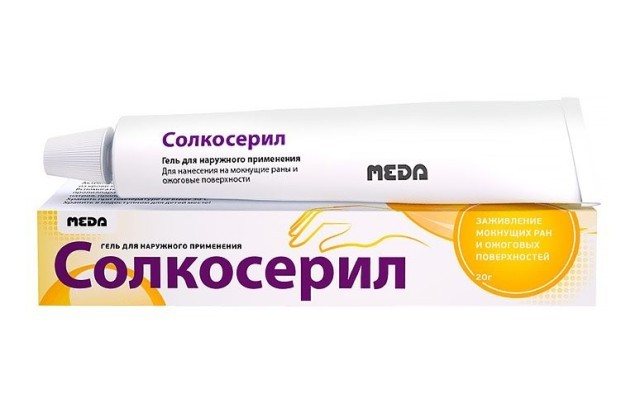
You can find out which drug is suitable in each specific case only by consulting a doctor. It is also necessary to agree with him on the timing of use and dosage.
Review of commonly prescribed drugs
For atopic dermatitis in children, doctors prescribe new generation hormonal drugs, which are available in the form of ointments, creams, emulsions, and lotions.
Let's look at them in more detail:
- Lokoid.
The drug contains hydrocortisone butyrate. It is believed that it is the same as hydrocortisone. There's no point in paying more for it. However, this is not quite true. Thanks to the butyric acid residue, the hormone fights inflammation better and penetrates the skin more effectively. This is a stronger drug, but it is approved for children. When it is broken down, hydrocortisone is formed (read about the use of hydrocortisone ointment in this article), which is quickly removed from the body with minimal risks, and butyric acid, which has no effect. The drug can be used for babies from six months old , applying it to any area, even to the face. The frequency of use is determined by a specialist. It can be from one to three times a day. In case of severe disease, it can be used for a long time, but not more than 30-60 grams (two tubes) per week, depending on age. Price - about 260 rubles. - Advantan.
Easily and quickly able to penetrate the skin. The drug itself is inactive, but due to the influence of enzymes, its activity becomes 6 times higher than that of hydrocortisone. Even with a single use, it has maximum effect with minimal side effects. Can be used from four months, applied to any area of the body and face. If the dermatitis is not severe, the product eliminates the negative symptoms in just one day. Apply once a day. Cost - from 500 rubles. - Afloderm.
A local corticosteroid, but its effectiveness can be compared with strong drugs of this series. Due to the presence of chlorine molecules in the composition, the hormone quickly penetrates into the dermis to the site of inflammation. Does not cause skin atrophy even with prolonged use. It is recommended to use the drug when atopic dermatitis affects a large area of skin. You can use it for children from six months on any area of the skin no more than once a day. Price - about 300 rubles. - Elokom.
An American drug that also has high activity and a low likelihood of adverse reactions. Effectively fights atopic dermatitis. 0.1% ointment is used for children over two years of age. Apply no more than once a day. Costs about 80 rubles. - Celestoderm.
An antibacterial hormonal drug with anti-inflammatory and vasoconstrictor effects. Contraindication: age younger than 6 months. It is used mainly when a secondary infection is added to the main disease. Can only be used for a short course. The drug can be purchased at a price of 230 rubles. - Fucicort.
Glucocorticosteroid agent with anti-inflammatory and antibacterial effects. Helps fight pathogenic microorganisms. Apply a thin layer. The duration of therapy is no more than two weeks. Contraindication: age under one year; the composition should not be applied to mucous membranes or open wounds. The cost is around 420 rubles and above.
Moisturizing and drying preparations
When treating atopic dermatitis, it is important not only to treat skin lesions, but also to properly care for the skin.
Mustela cream
Based on sunflower oil, glycerin and petrolatum (petrochemical fat).
Used for dry skin in newborns. Moisturizes, soothes problem areas of the skin, creates a protective barrier.
Review: “Natural children's cosmetics helped relieve itching and flaking not only in my infant son, but also in my eldest daughter! I haven’t found any shortcomings yet!”
Emolium
A medicinal cosmetic cream based on an active substance obtained from borage seeds, as well as corn oil, shea butter, and macadamia oil.
It is used for dry, dermatitis-prone skin, as well as for atopic dermatitis.
The cream relieves itching, flaking, nourishes and moisturizes the skin.
Review: “Perfectly moisturizes the skin. I use the entire Emolium series of products both for myself and for my child.”
Topicrem (piroctone olamine, lactic acid)
Has anti-inflammatory, regenerating properties.
Designed to care for dry skin and treat skin rashes.
Cannot be used by children under 10 years of age.
Review: “The cream is well suited for adults, but not so much for children: there is a strong smell of perfume.”
Losterine
Consists of deresined naphthalan, panthenol, salicylic acid, almond oil, has anti-inflammatory, antibacterial, antipruritic properties.
Prevents dryness and flaking of the skin, restores its protective functions.
Review: “The cream has proven to be a very effective treatment for atopic dermatitis in a child in combination with a hormonal drug. Prevented the development of withdrawal syndrome, which often occurs in children.”
La cree cream
A drug created on the basis of plant components (jojoba oil, wheat germ, shea butter; violet, licorice extracts, bisabolol, litcithin).
Used to moisturize and nourish dry skin in adults and children from birth.
Can be used for prophylactic purposes for problem skin.
Review: “A good natural cosmetic product for dry skin, safe for children, but for serious skin diseases it is better to combine it with more powerful products.”
Bepanten ointment (dexpanthenol)
Stimulates tissue regeneration, promotes healing of damaged skin, recommended for use in dry forms of dermatitis.
Review: “It eliminates diaper rash on a child’s skin well without causing dryness; relieves irritation due to diathesis on the cheeks.
An excellent product for diaper use for prevention.”
Cream f99
The drug, based on the therapeutic effect of vitamin F, gently cares for dry, cracked skin, moisturizes and nourishes.
For dermatitis, it relieves irritation and itching of the skin surface, reduces the number of rashes.
Review: “A great natural product that takes good care of the skin. However, after opening, after some time the cream has a strong smell of watercolor.”
Sudocrem (zinc oxide)
Softens and soothes the skin, dries “wet” affected areas. Has antibacterial and analgesic effects.
Review: “The cream is ideal for eliminating diaper rash caused by wearing diapers or swaddling; it quickly relieves irritation and redness on the baby’s skin.”
Zindole (zinc oxide)
Available in the form of a suspension, it has an anti-inflammatory, drying, softening effect on irritated areas of the skin.
Reviews: “A good, time-tested product. Convenient to use when applied to the skin, especially in areas of hair growth.
The best product for oily skin, since, unlike ointments, it is not made on a greasy basis.”
Desitin ointment (zinc oxide)
An antiseptic anti-inflammatory agent, when applied to problem areas, creates a protective film, dries and softens the skin.
Review: “An effective drying agent, however, should only be used for very severe diaper rash.”
Zinc ointment (zinc oxide)
Anti-inflammatory local remedy, has antiseptic, drying effects.
When applied, it creates a protective film from external influences and reduces the exudation process.
Review: “The ointment dries the skin well, the main thing is not to overdo it and not cause the opposite effect (excessive dryness). Cheap remedy."
Cream with zinc
The rich composition of the drug (zinc oxide, sulfur, willow bark extract, vitamin E, tea tree oil, chamomile, rose hips, calendula extracts, St. John's wort) has antimicrobial, anti-inflammatory, highly regenerating, drying effects.
Review: “The high price of a cream containing zinc is a little confusing, but the effect of use is worth it: it not only dries the skin well, but also gently cares for it, making it soft and silky.”
Enterosgel (methylsilicic acid)
The product for preparing a suspension taken orally has a detoxifying effect (eliminates the effect of toxins on the body).
Improves the functioning of the liver, kidneys, intestines, and improves immunity.
The drug is prescribed as an additional method of treatment for a wide range of diseases, including the treatment of dermatitis.
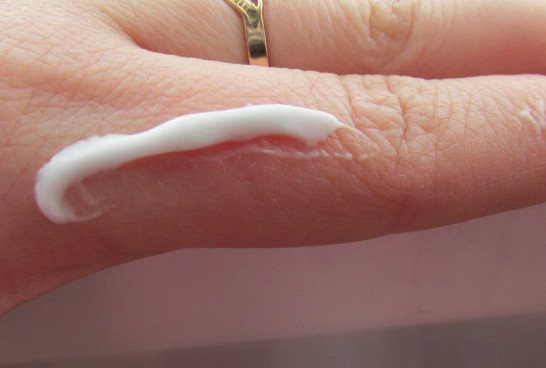
Review: “A wonderful remedy for gastrointestinal disorders, which especially often occur during periods of changing climatic conditions.”
Methyluracil ointment (methyluracil)
Anti-inflammatory, immunostimulating agent, increases humoral immunity, stimulates cell regeneration.
Indicated for any skin lesions (dermatitis, diaper rash, burns).
Review: “When treating dermatitis, it is better to combine the ointment with additional products containing zinc or panthenol.”
Fenistil gel (dimetindene maleate)
Antihistamine, reduces the manifestation of skin allergic reactions:
- Redness;
- Itching;
- Edema;
- Has an anesthetic effect.
Review: “An indispensable remedy for mosquito bites, instantly relieves itching and redness.”
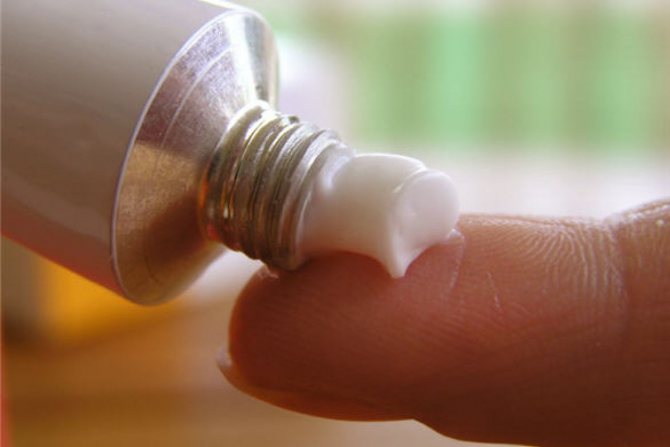
Ointments based on birch tar (Vishnevsky ointment, Konkovo)
Anti-inflammatory, antiseptic, restorative agents, relieve itching, redness of the skin, eliminate skin rashes.
Contraindications: pregnancy, lactation, early childhood, skin sensitivity.
Review: “The drugs are good for disinfecting the skin, in places of purulent lesions and for psoriasis, but the increased content of carcinogens in the drug does not make it the drug of choice in the treatment of skin lesions.”
Important! Before applying the product, it is necessary to test for hypersensitivity to the components of the drug.
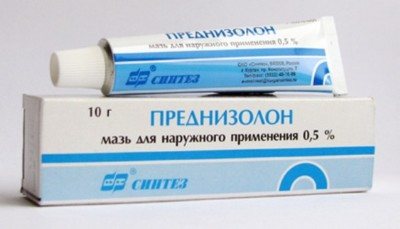
https://www.youtube.com/watch?v=R-mBL9av8VE
Rub a small amount of the medicine into a healthy area of skin, wait 30 minutes. If you have an allergic reaction: redness, itching, stop using.
Can it be used in childhood?
If atopic dermatitis is mild and affects small areas, doctors try to use non-hormonal remedies. But in some cases they are not enough.
If the pathology is severe, accompanied by complications, the rashes are severe, there are many of them, therapy should be more serious. Children are prescribed minimal doses of hormonal ointments .
If your doctor has prescribed a hormonal drug for dermatitis for children, you should not be afraid to use it, as otherwise the negative symptoms may intensify and spread.
But it is important to strictly adhere to the specialist’s recommendations. The issue of age restrictions is decided individually.
Many drugs can be prescribed to children from several months old, but this should be decided by the doctor depending on the severity of the process.
What are the dangers for a child?
The issue of the safety of hormonal ointments still causes a lot of controversy. There can be many reasons for the occurrence of atopic dermatitis, but the mechanism behind it is always the same - allergic inflammation of the skin.
Therefore, the causes of the disease play a greater role in prevention, but anti-inflammatory measures are needed in therapy.
Now the attitude towards hormones in pediatric therapy is somewhat different than before. Many clinical studies have proven that hormonal therapy for atopic dermatitis is safe and necessary.
The inflammatory reaction of the skin involves special types of cells that secrete substances that cause redness, itching, and swelling of the skin.
There are other cells. In a normal state, they are at rest, but when an inflammatory focus occurs, they tend to it, further increasing tissue swelling. Hormones affect both categories of cells, being a universal way to relieve inflammation.
But there are factors that need to be taken into account. In children, the skin is thin, the epidermis is loose, small vessels are close to the surface. Therefore, the hormone is absorbed into the blood faster and more actively, increasing the risk of side effects. Repeated dermatitis, allergic reaction, rash, itching, acne, burning, prickly heat, fungal infection, hypertrichosis, vascular dilatation, skin atrophy, Cushing's syndrome, adrenal dysfunction may occur.
